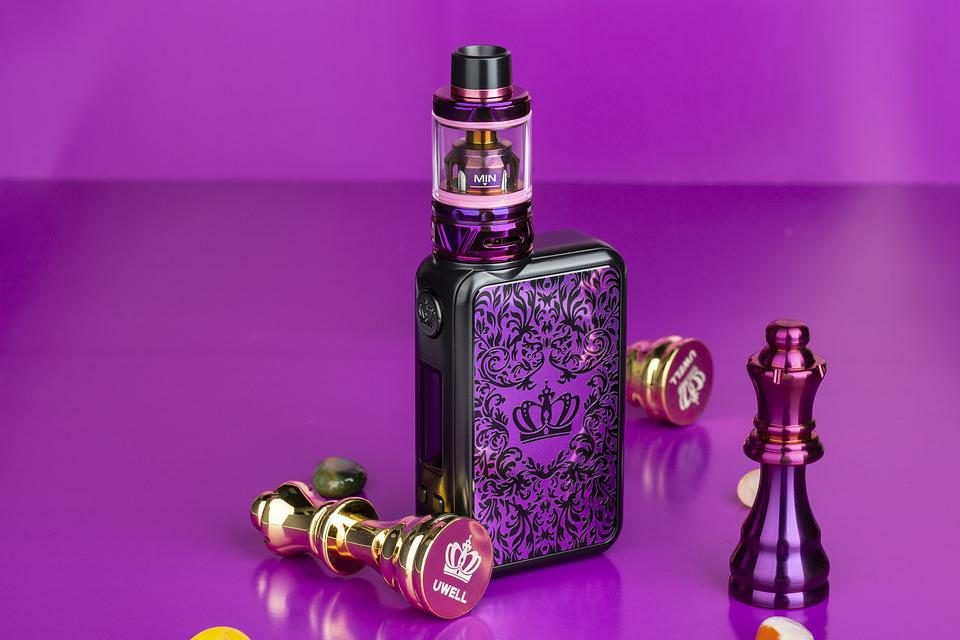News
How to Use a THC Vape Pen Safely and Effectively?

At its most basic, a vape pen is just a pen-shaped device that holds cannabis oil or concentrates, as the name suggests. Many people like vape pens because they are easy to use, discreet, and don’t take up much space. THC Vape pen can be utilized more than once or thrown away, and there’s a type for every budget.
When you draw on the vape as a user, all you get out is vapor: no mess, no ash, no problem. There’s no need to roll and light a joint, and you don’t have to worry about a dank smell while smoking or after you’re done. You also don’t have to stress about where to put the rest of your joint.
Just put the vape pen back in your pocket or purse, and you’re done. Let’s understand how to use a vape pen effectively.
How to use a Vape Pen?
Before you start, make sure your vape pen is fully charged. If your battery’s mAh rating is high, it will take longer to charge fully, but it will last longer. For a vape pen with a button, you must quickly click the power button five times to turn it on or off. To vape, you have to press the button while you take a breath in. If you press it too soon, the vapor might get too hot.
There are no buttons on the vape pen that works when you draw on it. Most of the time, they have a cut-off time of 10 seconds. If you use one of these vape pens for more than 10 seconds, it turns off automatically.
Some vape pens have extra features like preheating and a mode where the voltage can change. You can change the voltage with three quick clicks, shown by different colored LED lights. You should look at the manual to determine how much voltage your vape device can handle. The ideal manner of doing this is to start with low settings and slowly increase.
There are several kinds of vape pens available in the market.

Follow the directions
When you put your vape pen’s battery on charge, read the manual to find out how to utilize it, take care of it, and clean it so it works well. Also, remember what you read about changing the coil, atomizers, etc.
Run your vape pen dry
Before you load your vape pen, put it together the way the manufacturer tells you to. Set it for 30 to 60 seconds at its highest temperature. This way, any leftovers from the manufacturing process will be burned away, leaving you with a pure vape.
Put your stuff on and use
There are different ways to load each kind of material. Follow these steps based on the material you’ve chosen.
With e-liquid
There are two categories of e-liquid vape pens. DTL & MTL. DTL pens make bigger, denser clouds because they let in more air, while MTL pens are more likely to make you want to smoke because they have a tighter draw. Most vape pens today have coils that can be changed out and refilled.
You can choose how much nicotine to put in them and what flavor e-juice to put in them. It can even be used with THC vape oils in many different flavors. First, fill the tank of your vape pen with the liquid of your choice. However, don’t fill it too much. Start with a small puff and let it out quickly. Wait for 5 to 10 mins for the coil to prime.
Ensure your battery-powered vape is off before putting it in your pocket. Don’t hold it in for too long. Take a break between puffs to see how it makes you feel. When the flavor starts to go away, you should change the coil.
With oil cartridges
Vape pens often get used with THC and CBD oil cartridges. To connect it to the battery, you need to remove the rubber seal at the bottom of the oil cartridge. Then to get started. Wait a few minutes after taking a slight puff to see how it makes you feel, especially if the oil has THC.
Keep it low to avoid dry hits with a silica-wicking cartridge. Most oil carts should have between 3.3 and 3.8 volts. Most of the new cartridges have vape coils made of ceramic, which can handle high voltage without getting too hot and burning out. Some people even need a higher voltage to get a better hit.
With concentrates
THC and CBD concentrates are another choice for people who vape cannabis. They are also known as “dabs,” and they work with wax. With these dab pens, you don’t have to use a bong to smoke concentrates. Instead of wax, you can even vape CBD isolate crystals, which are much more discreet and easy to use.
Load a small quantity of concentrate into the heating chamber of a tool with tabs. Moreover, press the fire button gently to prime the coil as your material melts. Keep your finger on the fire switch and take a slight drag. Pulse the fire button while inhaling to keep the temperature from getting too high.
To figure out how THC wax makes you feel, you must wait a few minutes between puffs. With dry herb. Vape pens use heating coils that don’t work well for vaporizing dry herbs. The new vape pens of today use conduction, convection, or even both to make natural vapor.

Conclusion
Most of the time, THC vape pens are the best choice for people who want to try vaping THC for the first time. They don’t have to spend time rolling the joint. The ways mentioned above to use a vape pen will help you to utilize our THC vape pens safely and effectively if you are a beginner.
News
What’s Involved in the Personal Injury Claim Process

If you have sustained injuries because of another person’s negligence can file a personal injury claim to seek damages. However, it can feel complicated if it is your first time going through the claim process. Because of this, you can make mistakes. Sadly, even a simple mistake in this type of case can decrease your odds of securing compensation for your injuries. To avoid these mistakes, you should seek legal advice from an experienced personal injury attorney.
It’s not a legal requirement to hire an attorney to file an injury claim. However, hiring an attorney is usually the first step. The right lawyer can help you throughout each step of the process, which includes ensuring you have the right to sue. Below are the steps involved in the personal injury claim process:
Screening
As the injured party who wants to initiate a lawsuit, you must contact a lawyer for a consultation first. This allows you to talk about your case and the injuries you have suffered. During this consultation, the attorney may ask you to sign a document that authorizes them to access your medical records. The lawyer will ask about your insurance coverage, whether an insurance adjuster has contacted you, and what transpired during your conversation with them.
Once the lawyer accepts the case, they will thoroughly investigate the accident. This includes speaking with witnesses, collecting and preserving evidence, and contacting insurance companies.
Settlement Negotiations
Before you file a lawsuit, your lawyer will contact the insurance company of the at-fault party to determine if they can reach a fair settlement of your case before you to go court. Based on the circumstances and facts of your case, your lawyer drafts a demand letter with a settlement amount and send this to the insurance company. If both parties cannot reach an agreement, litigation can ensue.
Complaint Filing and Serving
Your lawyer will file the complaint with the court, triggering the litigation process. Then, the defendant will get a summons that notify them of your complaint and the amount of time they have to respond to it.
Discovery
During the discovery process, lawyers for both sides gather details and testimony, documents, and evidence related to the case. Discovery comes in the form of written discovery, depositions, and production of documents.
The discovery process is then followed by hiring expert witnesses, filing pre-trial motions, and going through mediation. These steps are meant to try to help both parties settle their case before going to trial. However, if they fail to resolve their issues during these steps trial will occur in court.
News
Hh gregg A Tale of Retail Resilience and Transformation

In the world of retail, few names are as iconic as hh gregg. This article delves into the fascinating journey of this retail giant, from its inception to its rebranding as Gregg’s, and the impact it left on the retail market.
| Heading | Subheading |
|---|---|
| Introduction | |
| The Rise and Fall | |
| Rebranding as Gregg’s | |
| Products and Services | |
| Customer Experience | |
| Online Presence | |
| Impact on Retail Market | |
| Conclusion |
Introduction
Once a household name in the electronics and appliances retail industry, hh gregg was known for its wide range of products and exceptional customer service. However, its story is not just one of success but also resilience and transformation.
The Rise and Fall
hh gregg’s rise to prominence was meteoric. Established in 1955 by Henry Harold Gregg and his wife, Fansy, as an appliance and electronics store in Indianapolis, Indiana, the company quickly expanded its footprint across the United States. With its commitment to delivering quality products and personalized service, hh gregg became a go-to destination for consumers seeking appliances, electronics, and more.
The fall of hh gregg, on the other hand, was equally dramatic. In 2017, the company filed for bankruptcy and subsequently closed all its stores. The reasons behind this decline were complex, including increased competition and changing consumer preferences.
Rebranding as Gregg’s
Despite the setback, the hh gregg story didn’t end there. The company underwent a remarkable transformation and rebranded itself as Gregg’s. This rebranding effort aimed to leverage the brand’s legacy while adapting to the changing retail landscape.
Products and Services
Gregg’s continued to offer a wide array of products, including appliances, electronics, and furniture. However, it also diversified into new categories such as smart home technology, emphasizing innovation and staying up-to-date with consumer demands.
Customer Experience
One thing that remained unchanged was Gregg’s commitment to customer experience. The brand focused on delivering exceptional service, ensuring that customers felt valued and supported in their purchasing decisions.
Online Presence
In the digital age, Gregg’s recognized the importance of an online presence. They invested in user-friendly websites and mobile apps, making it convenient for customers to browse, purchase, and track their orders from the comfort of their homes.
Impact on Retail Market
Gregg’s reentry into the retail scene had a significant impact. The company’s success story served as a beacon of hope for the retail industry, showcasing that reinvention and adaptation could breathe new life into even the most established brands.
Conclusion
In conclusion, the transformation of hh gregg into Gregg’s is a testament to the resilience and adaptability of retail brands. It demonstrates the importance of understanding customer needs and embracing change to thrive in an ever-evolving market.
FAQs
1. What led to hh gregg’s decline and bankruptcy?
The decline of hh gregg was influenced by factors like increased competition, changing consumer preferences, and financial challenges.
2. How did Gregg’s rebrand itself successfully?
Gregg’s successfully rebranded by diversifying its product offerings, focusing on customer experience, and establishing a robust online presence.
3. What products can I find at Gregg’s today?
Gregg’s offers a wide range of products, including appliances, electronics, furniture, and smart home technology.
4. How can I access Gregg’s online services?
You can easily access Gregg’s products and services through their user-friendly website and mobile app.
5. What can other retailers learn from Gregg’s transformation?
Other retailers can learn that adaptability and a customer-centric approach are key to surviving and thriving in the dynamic retail market.
News
Sonic Youth: The Revolutionary Band That Redefined Alternative Music

Sonic Youth was a groundbreaking band that emerged in the early 1980s and quickly became a significant influence on the alternative music scene. Combining elements of punk rock, noise, and experimental music, the band created a distinctive sound that challenged conventional ideas about music and paved the way for countless other artists to explore new sonic possibilities.
In this article, we will explore the history of Sonic Youth, their impact on the music world, and their enduring legacy. From their early days in New York City’s vibrant downtown scene to their final performance in 2011, we will examine the band’s journey and celebrate their contributions to alternative music.
Introduction to Sonic Youth
Sonic Youth formed in 1981 in New York City’s Greenwich Village, where they quickly established themselves as a force to be reckoned with in the underground music scene. The band consisted of Thurston Moore, Lee Ranaldo, Kim Gordon, and Steve Shelley, and their sound was characterized by dissonant guitars, unconventional song structures, and a willingness to experiment with noise and feedback.
Early Years and Rise to Fame
Sonic Youth’s early years were marked by a series of independent releases and collaborations with other artists. However, it was their 1988 album “Daydream Nation” that propelled them to international fame and critical acclaim. The album was hailed as a masterpiece and remains one of the most influential alternative albums of all time.
Sonic Youth’s Unique Sound
Sonic Youth’s sound was defined by their use of alternate guitar tunings, unorthodox playing techniques, and a willingness to experiment with noise and feedback. This approach was heavily influenced by avant-garde composers like John Cage and minimalists like La Monte Young. The band’s willingness to push the boundaries of what was considered acceptable in popular music helped to redefine the alternative music scene and paved the way for countless other artists to experiment with sound.
Sonic Youth’s Impact on Alternative Music
Sonic Youth’s impact on alternative music cannot be overstated. The band’s willingness to experiment with sound and push the boundaries of what was considered acceptable in popular music paved the way for countless other artists to explore new sonic possibilities. Bands like Nirvana, Pixies, and Sonic Youth’s own record label, SST Records, were all heavily influenced by the band’s unique sound and approach to music.
Sonic Youth’s Legacy
Sonic Youth’s legacy continues to live on in the music of countless other artists. The band’s willingness to experiment with sound and push the boundaries of what was considered acceptable in popular music helped to redefine the alternative music scene and paved the way for countless other artists to explore new sonic possibilities. Sonic Youth’s influence can be heard in the music of bands like My Bloody Valentine, Radiohead, and Arcade Fire, to name just a few.
Conclusion
Sonic Youth was a band that redefined what was possible in alternative music. Their unique sound, willingness to experiment with noise and feedback, and refusal to be bound by conventional song structures helped to pave the way for countless other artists to explore new sonic possibilities. Sonic Youth’s legacy continues to live on in the music of countless other artists, and their influence on alternative music will be felt for generations to come.
FAQs
- When did Sonic Youth form?
- Sonic Youth formed in 1981 in New York City’s Greenwich Village.
- Who were the members of Sonic Youth?
- The band consisted of Thurston Moore, Lee Ranaldo, Kim Gordon, and Steve Shelley.
- What was Sonic Youth’s unique sound?
- Sonic Youth’s sound was characterized by dissonant guitars, unconventional song structures, and a willingness to experiment with noise and feedback.
- What was Sonic Youth’s most influential album?
-

 Entertainment1 year ago
Entertainment1 year agoAdmiral casino biz login
-

 Entertainment2 years ago
Entertainment2 years agoHow Much Does The Rock Weigh
-

 Entertainment2 years ago
Entertainment2 years agoDownload Popular Latest Mp3 Ringtones for android and IOS mobiles
-

 Entertainment2 years ago
Entertainment2 years agoTop 10 Apps Like MediaBox HD for Android and iPhone
-

 LIFESTYLE2 years ago
LIFESTYLE2 years agoWhose Heartland?: The politics of place in a rural–urban interface
-

 Fashion3 years ago
Fashion3 years agoHow fashion rules the world
-

 Fashion Youth2 years ago
Fashion Youth2 years agoHow To Choose the Perfect Necklace for Her
-

 Fashion Today2 years ago
Fashion Today2 years agoDifferent Types Of lady purse

